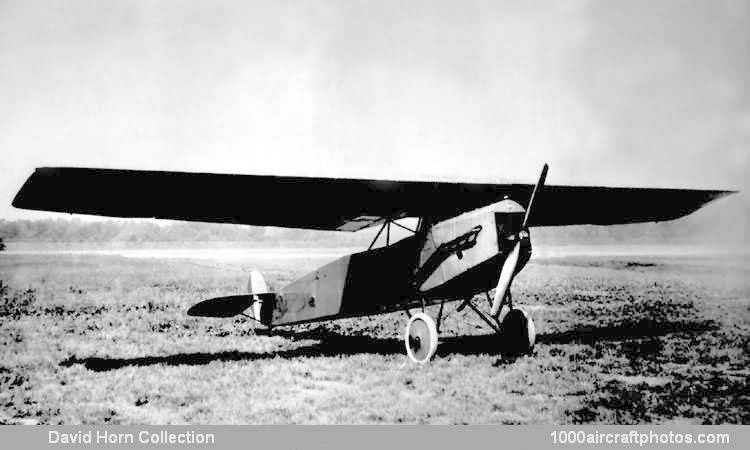The prototype was test flown by test pilot Adolf Parge at Schwerin early in 1919, fitted with a 75 hp Mercedes six-cylinder engine of 1913 vintage with a flat, square nose radiator. It was later taken to the Fokker factory at Schiphol, near Amsterdam, the Netherland, where it was painted green. It was flown a good deal at Schiphol until it was crashed by test pilot Emil Meinecke in October 1921 while attempting an emergency landing.
The V.43 was resuscitated as the Fokker S.I with modern liquid-cooled engines of 80 to 90 hp, and in 1922 Fokker took to the USA an S.I with a 90 hp Curtiss OX-5 engine. The USAAS bought it and gave it the designation TW-4, s/n 68576. In certain aspects it resembled the Fokker F.VI (bought by the USAAS as PW-5); in particular, its upper longerons were cranked upwards behind the cockpit.
With the Project Number "P-245", the Fokker TW-4 was tested by the McCook Field Engineering Division of the USAAS, the report was critical of the aircraft's taxiing characteristics:
"The rudder was too small for adequate ground control. Take off was easy, but the run was rather long; landing was also easy, but the TW-4 floated a long way after the round-out and would need an experienced pilot to get it into a small field or aerodrome. Laterally and longitudinally the aircraft was stable ; it was slightly tail-heavy at full throttle, slightly nose heavy in the glide. The field of view was excellent downwards and sideways, but extremely poor upwards and sideways. Accessibility for maintenance was good."
In his summing-up, the test pilot stated that the lack of upward visibility was a serious drawback in a military trainer, which would have to be used at aerodromes where numbers of aircraft would be in the air at the same time. The aircraft was salvaged November 5, 1923."
Span: 41 ft 8 in (12.70 m)
Length: 28 ft 0 in (8.53 m)
Height: 8 ft 5 in (2.57 m)
Weight empty: 1,342 lb (609 kg)
Loaded weight: 1,947 lb (883 kg)
Max speed: 87 mph (140 kmh)
